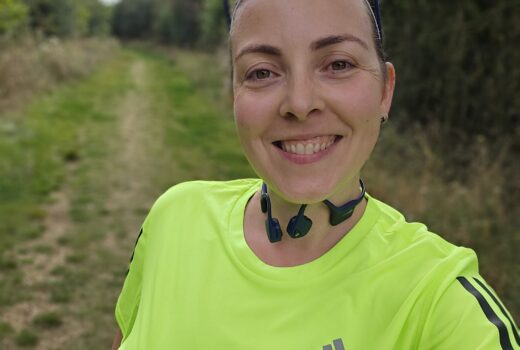Today I have a guest post featuring two lovely ladies who have agreed to share some info on seeing a physio when you’re injured.
Hilary Billie Wilson gives the physio’s perspective…
 Background:
Background:I graduated from the University of Otago in 2005 and have been working as a Sports and Orthopedics physiotherapist since. I started working in the private sector and for Rugby teams in New Zealand and Australia before moving to the UK in 2012. I have worked both in the public and private sectors in London. Currently contract to an NHS Specialty Musculoskeletal service, as well being team physiotherapist for the Old Haberdashers RFU 1st XV.
I am a keen runner, climber and diver, and previous ballerina, snowboarder, surfer, netball player and cyclist. My dream is to figure out how to combine working as a Physio and playing all of these sports at once, whilst watching as much Rugby as possible. Oh, and achieving a perfect downward dog.
b) Also don’t feel silly and weird when you are explaining this, lots of people stop ½ way through and ask if they are weird or making sense. Just be honest in what you feel, we’ve probably heard something similar before.
2. Bring any investigation/blood test reports you already have with you, despite most things being digitized it seems to be a pretty rare day that these reports get to me on time!
After the appointment:
1. Sometimes we cause a thing called ‘treatment pain’. Sorry. In order to assess you sometimes we have to poke and prod and bring your pain on in order to do this. Your practitioner will warn you of this and give you some guidelines to follow to minimize it.
4. Be careful when people tell you their stories of their similar injury. It’s human nature to compare ourselves to others, but please remember that every person and every condition is unique. Just because Joe down the road had a knee injury and ended up having surgery/using electrotherapy/got better and ran a marathon within a month doesn’t mean that you are going to as well! It’s so easy to let our minds run away with us!
Laura Stewart on treatment under the NHS…

Background
Laura is a keen runner, cyclist and all-round fitness lover, who blogs at lifelauralondon about trying to maintain some sort of balance while living in London..
I had quad/knee pains for about 6 months that would come and go. However I still ran and trained for 4 half marathons in that time. Finally, I got sick of the annoying pain that wasn’t going away so booked to see my GP.
I went into the GP appointment with the aim to get an MRI so I could see if anything was wrong in the knee. I’d been to seen a very knowledgeable sports masseuse and he said he couldn’t see or feel anything major wrong but an MRI is always a good idea when dealing with the complicated knee joint.
I explained detailed pain to the GP and said I was worried about a MCL tear (based on where pain was) or Mensicus tear and she agreed that an MRI would be a necessary first step. I think this is the key to be confident in what you think the problem is and if that problem can be solved by looking in the knee with an MRI then you’ll get one.
She referred me for an MRI and Physio at the same time. The physio called me that day to set up my first appointment on the telephone. The first appointment is on the phone so they can do a quick assessment of your injury and then make a decision to see you. While I don’t know if this is the best, it is more efficient for the physio’s time. My phone appointment was when I was on the bus so everyone got to hear about my knee!
The hospital called the next day to set up my MRI appointment and there was a space for one the next week at a location only 5 miles from my house. All very efficient. The MRI itself only took 15 minutes and I showed up early, was seen early and was out before my original appointment was scheduled to start!
I “passed” the phone physio appointment and was seen the next week at a clinic in Kings Cross (very convenient) and had a great appointment with a very knowledgeable physio who listened to me and didn’t automatically blame “weak glutes” or “heel striking running style” which was refreshing. She gave me some acupuncture treatment and some stretches until the next appointment in 2 weeks time!
All in all I am really happy with the NHS physio system. I think you do have to do your research before and be confident in your body and how it feels (a good suggestion for everyday life!) and clearly explain that to your GP to start the process off right. I’m sure private physio’s are great too but for me to spend upwards of £80 per appointment I would want to try all the other available services first.
One thing I will say is see someone, anyone! There is so much information out there on the internet that you can get sucked down a physio-hole of despair. Most of the information is general and when it comes to running injuries your treatment has to be 100% personal.
Thanks guys!
My physio experiences have been varied, and I think my problem a lot of the time is lack of confidence in knowing what to say/do so it’s very helpful to have some tips from a physio’s point of view! Laura’s focus in helping her to get what she wants to sort out her injury is definitely something I need to work on…. But I totally agree with her on the overwhelming amount of information available on the internet- it can be very easy to self-diagnose with the worst possible scenario and get totally depressed!
Fingers crossed all those injured runners out there will be back to tearing up the trails and pounding the pavements again soon 🙂
Do you have an physio related tips to share?
Beki x





